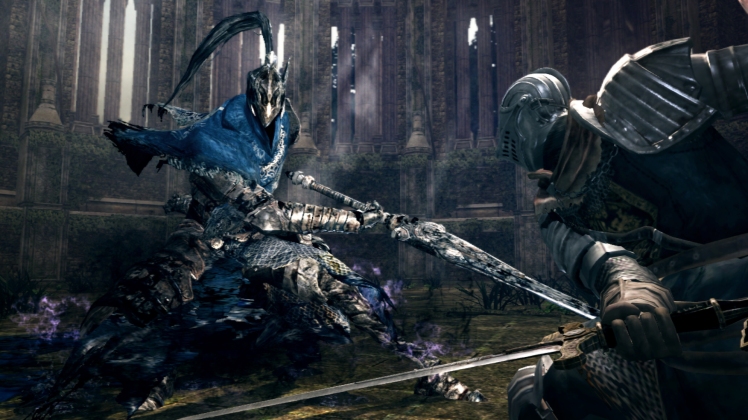
So I started playing Dark Souls in Feb, and recently got guud enough to beat the game once. After, you know, 205 hours. Woof.
My hot takes go a little like this: Anxiety, Jaquaying, Buddhism
1. Anxiety
In a well-designed game, decision-making is inherently anxiety-provoking. The sense of “empowerment” comes from making a decision and having it be the CORRECT one, thus validating your choice. If a game doesn’t validate your choice, it’s a loss – it feels bad. Dark Souls isn’t shy about declaring your choice incorrect (that’s what makes it “hard”), so there’s MORE anxiety produced by the choice, and MORE of a payoff if you get it right.
There’s a tradeoff – Dark Souls doesn’t care if you occasionally ragequit. If it screams WRONG at you loud enough, and often enough, and you can’t get it to scream RIGHT, that’s something the game design is generally OK with. This is part of that vaunted “respect for the player” that Dark Souls gets right – you know there’s an answer, and it’s just a matter of doing it. The more emotional the decision (the more anxiety it provokes), the more memorable the choice and consequence, and the more the player is likely to come back, even if they’re frustrated. By design, it provokes perseveration (which also means it provokes you to replay the game, to “work through the problem.”)
Dark Souls is cathartic because it inspires that anxiety cycle – the same thing that causes you to worry about your job or your children is what Dark Souls inspires in you, by ratcheting up the stakes. Then, the game allows you to release that anxiety. Shortcuts are one of the best ways that the game uses this anxiety cycle: the farther you are from a bonfire, the more tense you get about dying (and being able to make it back if you die), and a shortcut suddenly relieves that tension, that anxiety. It’s a problem you don’t need to worry about anymore.
How To Mimic This: Design decisions with big stakes – the possibility of some permanent loss is big, and “score” of some sort (or XP/currency) is a good thing to lose.
2. Jaquaying
When one is problem-solving, being able to approach the problem from multiple directions avoids frustration – the feeling of banging your head against the same thing over and over again is mitigated. Dark Souls avoids the repetitive hair-pulling fury of a Flappy Bird or a Super Meat Boy by having many paths and many options that the player can pursue at once. There’s very few bottlenecks in Dark Souls, and most of them are near the end of the game (as you polish off zones and reduce the amount of novel content).
Dark Souls level design is almost a stereotypical example of a well-jaquayed dungeon. Multiple entrances, loops (shortcuts!), discontinuity, secret paths, sub levels (upper and lower undead burg, undead parish), divided levels, nested dungeons (the Painted World of Ariamis), elevation shifts (the cathedral rafters vs. the cathedral floor)….these are the elements that create dynamic engagement with a space!
How to Mimic This: Jaquay the hell out of your levels, and their connections. Don’t leave the player with only one way forward.
3. Buddhism
It’s rare to find a religious allegory quite so blatant in a game as the Buddhist metaphor at the heart of Dark Souls. The world is dying, the worldly power of kings is all an illusion built out of material desire, and the endings you choose are either about continuing that cycle of Samsara, or about abandoning it to the void of Dark. Humans are uniquely capable of this oblivion-nirvana in the Dark Souls verse.
This, coated in the most Eurpoean of pseduo-medieval settings, is fertile ground in game design. The inevitable death, the repeated attempts to try and try again, all these are cyclical, wheels within wheels. “Happily ever after” is when the story ends, but games don’t end, they keep going (in Dark Souls, they keep going in New Game +), they’re repetitive experiences.
How to Mimic This: The game’s core cycle should be a cycle in the narrative as well. Failure shouldn’t be over-written (“oh, Nathan Drake didn’t really fall off that cliff…”), it should be embraced (“many adventurers have come this way before, and most have fallen off this cliff…”). Wrap the narrative around the cycle.